Sharlyn J. Lauby's Blog, page 103
February 15, 2019
Bookmark This! Cybersecurity In the Workplace Edition
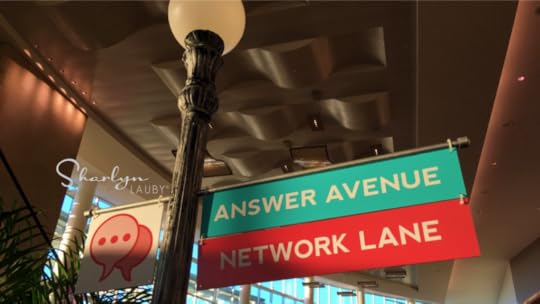
Technology is a big part of our personal and professional lives. And I don’t anticipate that changing anytime in the near future. But with technology comes risk and the need for cybersecurity. We need to be responsible technology users.
TechCrunch recently published five “how-to” guides focused on covering cybersecurity basics. If you’re not familiar, TechCrunch is a U.S. based publisher on technology industry news. They are owned by Verizon Media. The site has about 17M monthly readers worldwide. While I wouldn’t say this is everything that you need to know about cybersecurity, it’s an excellent start.
Why you need to use a password manager – Looking for a way to keep track of all your passwords? Or do you use the same password for everything because you don’t want to remember multiple passwords. It might be time to consider a password manager.
Two-factor authentication can save you from hackers – Many sites already use two-step authentication or verification. And while we know it’s to help us be safe on the web, it’s still a major PITA. Maybe if we learn more about how two-step authentication works, we won’t get quite as frustrated. And we’ll opt-in to use it.
How to protect your cell phone number and why you should care– According to Pew Research, ninety-five percent (95%) of Americans own a cell phone of some kind. This places a huge importance on a single device and protecting it from hackers is important.
How to browse the web securely and privately – Personally, I’ve become much more interested in learning about virtual private networks (VPNs) and HTTPS lately. Specifically, what they can and cannot do. Not because I’ve got some big, dark secret to hide. But if I’m doing a lot of work on the road, am I using the right technology the right way.
How to get started with encrypted messaging apps – Finally, short messaging service (aka SMS) has become a primary means of communication for some. I receive SMS messages to confirm appointments and get messages from family and friends. I want to know those messages are secure.
I can see these articles being a great primer for employees. Not only will it benefit them in their work, but it helps in their personal lives as well. It could also be something that employees share with their friends and family.
Helping employees become better with technology benefits everyone. I hope you’ll take a moment to check out these TechCrunch articles. And a huge thanks to TechCrunch for publishing them.
Oh, and P.S. Another component to cybersecurity is phishing. It’s defined as an attempt (usually via email) to trick you into giving away personal information. Google has published a “phishing quiz” which allows you to guess which emails are legit and which are fake. It’s not as easy as you might think. Heads up – the quiz asks you to provide a name and email address at the beginning. You can totally make one up. They’re not collecting information. But as you know, some phishing scams look pretty legit because they include your name.
Image captured by Sharlyn Lauby after speaking at the KronosWorks conference in Orlando, FL
The post Bookmark This! Cybersecurity In the Workplace Edition appeared first on hr bartender.






February 14, 2019
5 Steps for Sourcing Candidates You Have Interviewed But Rejected

In today’s competitive recruiting market, organizations need to keep their options open when it comes to sourcing talent. In a survey produced by the Society for Human Resource Management (SHRM), sixty-eight percent (68%) of HR professionals are having difficulty recruiting candidates for full-time openings. Companies can’t afford to turn off their pipeline to good talent.
One candidate source that we so often forget are people who have interviewed with the company before. Not every candidate who is rejected is a terrible fit. Maybe another candidate has more experience. Or the candidate is awesome but the company doesn’t have an opening. These candidates have skills we’re already aware of (because they’ve been interviewed). And they know a few things about the company (again, because they’ve been interviewed).
5 Steps to Sourcing Previously Interviewed Candidates
If you find yourself saying, “I can’t remember what I ate for breakfast this morning, much less remember the candidates who interviewed weeks or months ago”, keep in mind that you don’t have to remember everyone. Just consider building these five habits into your recruiting process that will help you remember:
Ask the question. When you’re meeting with the recruiting team to select the final candidate, ask the question, “I understand these candidates aren’t being selected for this job opening. But before we move on, could you see them somewhere else in the company?” Get managers to start thinking beyond the current opening and beyond their own department.Set expectations. When the company informs candidates that they’re not being selected for the current opening, there’s nothing wrong with adding that they’re welcome to reapply. This leaves the door open for them to stay in touch via the organization’s talent network and possibly find another job they’re interested in. Think internal and external. “Rejected candidates” doesn’t only mean external candidates. Look at internal candidates who have previously expressed interest in promotions or transfers. Maybe they need to be reminded that they can reapply for opportunities as well. This can not only be a boost for recruiting but employee morale. Use technology. Check your applicant tracking system (ATS) for skills matches. The candidate may not have interviewed in the same department for the same position, but they have the transferrable skills that qualify them for a different opening. Make sure your career portal, social media messaging, and talent network know that former candidates are welcome.Inform your network. It’s not necessary to remember every candidate. If you use a collaborative hiring process, remind the other members of the recruiting team. They might remember someone that they’ve spoken to in the past. All team members should be sharing the same message about candidates being able to reapply.
Recruiters can build the consideration of former candidates into the sourcing process by adding a couple of small steps to their existing recruiting routine – either through remembering them or by the former candidate remembering the company.
Don’t Lose Great Candidates Because They Were Interviewed and Rejected
It’s true – not every candidate is a perfect fit for the company. Deep down, those candidates probably know that too. But in many situations, candidates with great knowledge, skills, and abilities get interviewed and turned down (because there’s only one opening to fill). There could be other opportunities for these talented job seekers.
The key is finding ways to keep previously interviewed (and rejected) candidates engaged and top of mind so the organization can consider them at another time.
Image captured by Sharlyn Lauby after speaking at the ATD International Conference in San Diego, CA
The post 5 Steps for Sourcing Candidates You Have Interviewed But Rejected appeared first on hr bartender.






February 12, 2019
The Next Employee Challenge: Loneliness In the Workplace
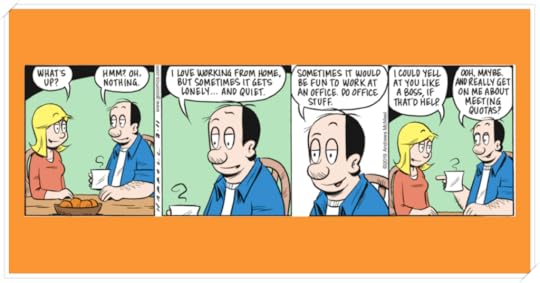
Loneliness is not the same as being alone. Being alone is … being by yourself. If you Google loneliness, it’s being “sad because one has no friends or company.” Often, we talk about loneliness in terms of older people. In the New York Times article, “The Surprising Effects of Loneliness on Health”, the author shares that loneliness can raise stress levels, increasing the risk of heart disease, diabetes, and dementia.
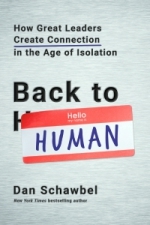
The truth is there’s no rule that only old people get lonely. My friend Dan Schawbel has recently published a book titled “Back to Human: How Great Leaders Create Connection in the Age of Isolation”. If you’re not familiar with Dan’s work, he has two other New York Times best-selling books: “Me 2.0” and “Promote Yourself”. He also did an interview on HR Bartender a few years ago about reinventing your personal brand.
Anyway, back to the book. In “Back to Human”, Dan suggests that our increased use of (and addiction to) technology is a key contributor to loneliness. And when people are lonely, it has an impact on their work. Totally makes sense. The solution? Create more connectedness at work. Frankly, that’s easier said than done.
 Dan Schawbel
Dan SchawbelIf you’re wondering how connected you are right now with your co-workers, the book offers information about an assessment called the Work Connectivity Index (WCI). This could be a great starting point in your journey toward creating a more connected workplace.
I don’t have to tell you that having a company culture where employees feel connected is going to result in greater engagement, higher productivity, and increased retention. The question is how to move from “unconnected” or less connected to more connected. In his book, Dan talks about focusing on the employee experience in three specific areas.
Culture – The book shares a few stories about the advantages of creating a company culture that on the surface might seem “cult-like” with its unique jargon and traditions. And I don’t mean that in a bad way. When employees feel like they’re part of the club or part of the team, private jokes can bring the group closer. Obviously, the situation must be monitored so it doesn’t cross the line toward being a clique.
Relationships – Years ago, I went on a job interview for a hotel leadership position. During the interview, I was given a tour. We were walking though the kitchen when an employee asked who I was, and the general manager told them. Then the employee said to me, “I hope you come to work here.” And gave me a hug. I got that job (and I took that job) because I felt like I was working with family. Relationships matter. Simply working with someone on a project isn’t the same as having a relationship with them. Managers and employees need to build relationships.
Space – Let’s face it, our physical work space is important. If we’re not comfortable, we can’t do our best work. And if we’re not comfortable, we won’t feel like building relationships with anyone (see #2 above). Organizations need to provide employees with work areas that have proper ventilation, lighting, and ergonomic furniture. They also need to provide current technology so employees can be effective.
My takeaway from Dan Schawbel’s book “Back to Human” isn’t to eliminate technology. It’s to do a better job of working with it. As more organizations find themselves in the midst of a digital transformation, I see “Back to Human” being required reading for managers and leaders. Organizations must take a proactive approach and create a more connected workplace.
Adam@home licensed from Andrews McMeel Universal
The post The Next Employee Challenge: Loneliness In the Workplace appeared first on hr bartender.






February 10, 2019
The Best Way to Handle Employee No Call No Show – Ask #HR Bartender

I can’t believe in all of my years of answering questions, we’ve never been asked about “no call, no show”. That changes today. This is quite a story.
We had an employee that was a No Call No Show for three days. He ran one of our company trucks and had a company issued gas card.
When I ran the payroll, that’s when I found out the employee had been terminated. When I processed his final check, he had no regular hours worked and 40 hours of vacation time, which I paid him.
My boss came to me and asked how it came about that I paid the employee. He said that the employee was charging personal gas on the company gas card and we should have deducted it from his final check. He told me I needed to get approval to pay the vacation hours on a final check and said that the company gets extra time to pay the employee their final check. He tried telling me we get 30 days before we pay the final check, which I know is not correct. In a situation like this, what is the amount of time we have to pay the employee their final check?
A “no call, no show” situation isn’t as straightforward as it might look. To help us understand more, I asked our friend Kate Bischoff to share her knowledge. Kate is an employment attorney and HR consultant at tHRive Law & Consulting LLC. She’s shared her experience with us before. Her comments in this post about the “Employee Having an Affair with the Boss” are some of my favorites.
And don’t forget that Kate’s comments should not be construed as legal advice or as pertaining to any specific factual situations. If you have specific detailed questions, they should be addressed directly with your friendly neighborhood labor attorney.
Kate, let’s quickly talk about no call no shows. Should they be viewed as a “termination” or a “resignation”? And does it matter which way it’s classified?
[Bischoff] It can make a difference in two different ways. The first way relates to unemployment. If an employee resigns, the employee may not be eligible for unemployment. If the employee was terminated, they could be. This may have a significant impact on employers with high unemployment taxes or experience ratings.

The second way is the timing of the final paycheck. In a few states, the paycheck may need to be paid within 24 hours of a demand by the employee. This requires payroll to have its ducks in a row, and some employers work on the assumption that payment will be made very quickly when they terminate. For employees who resign, their paychecks can often wait until the next regularly scheduled pay date.
This difference is why many employers have a policy somewhere in their handbooks that says three consecutive no call, no shows could be considered job abandonment, otherwise known as resignation. (Warning! Do not make this automatic. The absences could be due to an accident or illness triggering a reasonable accommodation or leave.)
How can employers find out the law when it comes to the amount of time to process final payroll checks?
[Bischoff] Organizations should check their state’s labor or workforce department. Unfortunately, each state is different. Give them a call or look at their online FAQs. Most will have final paycheck issues covered, because they often answer the same questions about this every day.
In this situation, the company believes that the former employee owes them money. If an employee does owe the company money when they resign, can it be taken out of an employee’s final check?
[Bischoff] Be very careful here. Some states, like Minnesota, have requirements before deductions for loans or losses can be taken out of a final paycheck and these requirements can be onerous.
Most employment lawyers will tell employers that it would be best to invoice the employee or take her/him to small claims court rather than mess with final paycheck laws that often carry civil penalties and even possible debarment from government contracts.
In this situation, the final paycheck was issued to the employee without taking out the funds allegedly owed. Could the company go back and ask the former employee for the money? Should they?
[Bischoff] Typical lawyerly answer, it depends. Most often, it is not worth the fight to get the money in small claims court or by improperly deducting the money. In other circumstances, like large loans or employee fraud or abuse, setting the expectation that an employer will seek the money is important too. It really depends on the individual circumstances.
Final question. The reader’s note alludes to the payroll clerk being given misinformation about the processing of final paychecks. What should an employee do if they are being asked to do something that they know (or suspect) isn’t correct?
[Bischoff] Good human resources people are curious and take the time to find the right information. If you have a sneaky suspicion that not everything is right, do your research.
Look at state agency websites – even the actual laws – and ask your agency questions. If you have a friendly neighborhood employment attorney handy, reach out and ask them too.
When armed with the correct information, approach the individual with the wrong information carefully. You both want to do what’s right, so asking where they got their information and working toward the correct solution is the best approach.
As always, I want to give a HUGE thanks to Kate for helping us with this reader note about employee no call no show. If you want to read more of Kate’s insights (and I know you do), be sure to check out her blog.
Curiosity in today’s business world is a good thing. Don’t be afraid to ask questions or do a little internet research. It could make your job a whole lot easier.
Image captured by Sharlyn Lauby while exploring the streets of Las Vegas, NV
The post The Best Way to Handle Employee No Call No Show – Ask #HR Bartender appeared first on hr bartender.






February 8, 2019
Rewards and Recognition Can Be Work Related – Friday Distraction
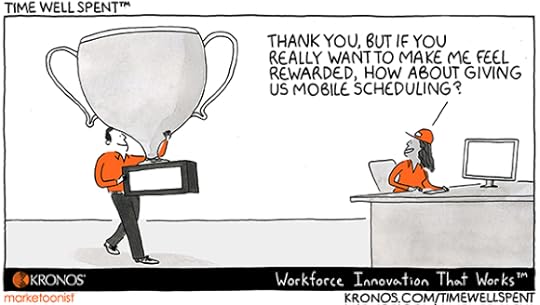
A few weeks ago, I published a Time Well Spent from our friends at Kronos about recognition and rewards. It was about the boss who gave every member of the team an ugly holiday sweater. I hope you’ll check it out if you haven’t already. This one reminded me of another aspect of rewards and recognition that we might forget. And that’s all rewards do not have to be personal.
What I mean by that is, the goal of rewards and recognition is for the recipient to feel the value (of the sentiment). It’s true, sometimes that might be an item that an employee really wants on a personal level. I’ve had bosses give me an extra day off or a Starbucks gift card because they knew I liked those things. But once I had a boss give me a printer for my office. Yep, that’s right…a printer.
Did I need a printer? No. My office printer worked just fine. It was old but it worked. My boss knew that I really wanted a new printer with the latest technology. So, to thank me for my hard work, he approved a printer. I was thrilled.
By sharing this story I’m not implying that managers should all start buying office equipment for their employees. But this Time Well Spent cartoon reminded me that sometimes employees value rewards that make their work lives easier. Or rewards that make them feel they are keeping up with the latest technologies. Like mobile scheduling.
Employees expect their work technologies to mirror their personal lives. Let’s face it, we’ve become really spoiled with the capabilities of today’s technology. I can deposit a check without going to the bank. I bought Aquaman movie tickets while standing in line at a store. Employees expect to have the conveniences of technology at work. And when I say employees, that includes manager level employees. Supervisors and managers want technology to make their work lives easier too.
Companies that want to attract and retain talent need to have current technology. This goes along with the first bullet. The recruiting landscape is competitive. Employees have choices. When faced with the decision to apply at an organization with the latest tech or outdated tech, which one do you think they’ll choose? Exactly. This doesn’t mean that organizations have to run out an buy the latest at the moment it’s available. But it does mean they need to plan to keep competitive.
Organizations that want to send the message to employees that their work is valued need to also think about how the work gets done. Giving an employee the latest equipment is one way to show that the organization cares. They care that employees perform at a high level using the best technology. Which could translate into less stress, better work / life balance, and improved engagement.
I’m not saying that managers should stop the thank you’s, gift cards, or extra time off. Those forms of rewards and recognition are important. But sometimes, organizations need to think about rewarding employees by making their work life easier.
The post Rewards and Recognition Can Be Work Related – Friday Distraction appeared first on hr bartender.






February 7, 2019
Job Seekers: There Is a Fine Line Between Persistent and Pest

I recently ran across an article about job seekers following up after an interview. I was interested in it because I’ve written several times about how to follow-up after a job interview. Here are links to a few of the previously published articles:
How To: Follow Up After a Job Interview
Who To Contact After a Job Interview
Company Promised a Second Interview
What to Do After a Bad Job Interview
Anyway, back to the article. There was a sentence in it that said, “If you want to get the attention of a prospective employer, you may very well have to be a pest, a nice persistent pest but a pest none the less.” I totally get it and completely understand why the author wrote it. Candidates want the job. So, they’re anxious and excited.
As an HR pro, let me offer some advice. Don’t be a pest. Not even a “nice pest”. Being a pest isn’t the same as being persistent. What job seekers want to do is be effective, efficient, and a good communicator. Candidates want to and should follow-up. But do not be a pest.
That being said, let me reiterate the best way to follow-up and not step over the line from persistent to “pest” status:
Remember the goal of job search. I worked for an outplacement firm many years ago and we always told candidates the goal of a job search was to receive multiple offers. The key word being “multiple”. That means job seekers should be constantly working leads – multiple leads – in the hopes there will be multiple offers. I’m bringing this up because…
Don’t put all of your efforts in one basket. If the goal is to get multiple offers, then candidates shouldn’t be focused on one company or one job. Yes, I’m sure there are jobs that candidates really like. But if a company isn’t responding, there are other opportunities available. Especially in today’s job market with record low unemployment.
When you go to an interview, find out next steps. Then follow them. I tell recruiters that a candidate should never leave an interview not knowing
When the company is going to make a decisionWho to contact with follow-up questionsHow to follow-up (email, text, or phone).
If the recruiter doesn’t automatically tell you, ask the question. Then, once you know, do what the company asks.
Now, if all of these considerations haven’t convinced you that “being a pest” may not be the best strategy, let me toss out one more thing. Do you really want to work for a company where you had to become a “pest” to get the job? Even a “nice pest” to get the job? When it comes to new opportunities, candidates should be interviewing the company as much as the company is interviewing the candidate. And if it takes pesky behavior to land a new job, just imagine what the employee experience will be like. If you don’t like being overly persistent or pesky to get the job, then will you want to do it to get training, ask for a raise, or request time off. Enough said.
Maybe it’s just my perception of the word pest, but when job seekers cross over to the pest category, they run the risk of organizations questioning their ability to follow the rules. This doesn’t mean candidates can’t contact the company or send a follow-up note. (They absolutely should.) Just be careful about going from interested and attentive job seeker to pesky candidate.
Image captured by Sharlyn Lauby somewhere off the coast of Havana, Cuba
The post Job Seekers: There Is a Fine Line Between Persistent and Pest appeared first on hr bartender.






February 5, 2019
The Top 5 Soft Skills That Employers Should Look For

(Editor’s Note: Today’s post is brought to you by our friends at Criteria Corp, a leading provider of pre-employment testing services. If you want to learn more about how pre-employment testing can benefit your recruiting strategy, check out Criteria Corp’s “Definitive Guide to Pre-Employment Testing”. I found this to be a comprehensive guide that I keep on the corner of my desk all the time. Enjoy the post!)
According to an article on the blog Wizard Sourcer, 2019 will be the most challenging market for recruiters in years. Honestly, this probably isn’t a surprise. A lot of companies are having a hard time getting enough applicants. I recently spoke with a talent acquisition professional who posted an open position and received zero response. That’s not a typo. She received no response at all.
But sourcing is only one way to get better applicants. After sourcing efforts are tapped out, how can you really make sure you’re seeing the full potential of your current candidate pool? Another way is by addressing the skills gap.
In addition to just plain not finding applicants, organizations are having trouble finding candidates with the right skillset. This points to a growing skills gap. And not finding the right candidates can lead to bigger issues. In a public policy paper, the Association for Talent Development (ATD) noted that 87 percent of CEOs are finding that the skills gap is a threat to their business.
The skills gap is more than STEM
When we think of the skills gap, we often think of STEM (science, technology, engineering, math). But there’s another skills gap. One that involves soft skills. In the ATD public policy paper I mentioned above, they identify a list of soft skills. Here are examples of five soft skills that many employers care about:
Communication skills. So much is written about communication and yet, there’s still work we can all do to be better communicators both verbally and in writing. Even if the job doesn’t involve writing formal reports, there are many other every day work tasks that include communication such as answering emails, providing a short status update during department meetings, and one-on-one meetings with management or a vendor. All of these things require effective communication.Interpersonal skills like conscientiousness and agreeableness. In the Harvard Business Review article “Collaboration Overload”, the authors mention that collaborative work is on the rise. If that’s true, it means that being successful in our jobs requires good interpersonal skills. Even individual contributors get things done by working with others. We need to be conscientious when it comes to our team relationships and display agreeableness in our interactions with others. Critical thinking and problem-solving skills. The business world is moving way too fast today to leave challenges unanswered. Staying competitive means learning new skills and addressing problems. Organizations will want employees who have the ability to identify issues, bring those to the attention of others, and work with teams to create solutions to fix the problem. Everyone doesn’t need to solve every problem on their own, but they do need to be able to contribute to the solution. Project management including detail orientation. Once solutions are identified, then projects get created to fix those issues. It’s all about execution. And if you’ve read the book, “Execution” The Discipline of Getting Things Done”, you know not a lot of companies do this well. Project management is the art of delivering a quality outcome, on-time, and within the allotted resources. Organizations want to hire employees who have the ability to effectively execute projects.Management and supervisory skills. All of the skills we’ve discussed so far include a management component. It could be communicating information to employees. Or collaborating with HR to hire the best talent. Maybe working with employees to brainstorm ideas and then putting together a plan to execute those ideas. Whatever it is, management is involved. Organizations need strong managers and supervisors to run the business.
But let’s face it. If companies are having challenges sourcing the best applicants, they might have to reevaluate their recruiting strategies to include considering candidates who might not have the exact work experience or technical expertise that they were looking for, but they do have the soft skills like the ones we just discussed. Companies can identify candidate “potential” through the use of interviewing questions and pre-employment assessments.
Behavioral interviewing is the concept that a candidate’s past behavior is an indicator of future performance. Interview questions usually start with “Tell me about a time when…” so the responses are experience related stories. Interviewers can create behavioral based interview questions related to soft skills such as “Tell me about a time when you weren’t able to meet a project deadline.” Or “Tell me about a time when you had to communicate bad news.”
Targeted interviewing is when the interviewer asks questions targeted on a particular job skill. For example, Criteria Corp CEO Josh Millet likes to ask candidates “Could you tell me more about this job you held a few years ago?” he says that it helps him understand the candidate’s attention to detail. First, the candidate needs to explain their job responsibilities for a position they held years ago. Second, it gives the candidate an opportunity to share their previous accomplishments.
Pre-employment assessments, specifically cognitive aptitude tests, measure an individual’s aptitude or ability to solve problems, digest and apply information, learn new skills, and think critically. These types of assessments provide an indication of what an applicant is capable of learning. So instead of using an assessment to filter candidates out, they can be used to highlight candidates who might be light in work experience but have a high potential to learn.
Once the candidate is hired, the organization’s onboarding and training programs can help employees gain the technical skills they need to succeed. In the case of pre-employment assessments, the company can also use the results as an employee development tool.

Hiring for soft skills can increase the ability to find talent
As the recruiting market remains competitive, organizations will have to look for new ways to find the best talent. For example, many technology companies no longer require a college degree. But please note, I’m not saying that a competitive job market means companies have to lower their standards. It does mean shifting priorities. During the hiring process, organizations might want to consider looking for the soft skills that are harder to train for AND shifting their training focus toward technical skills.
If you want to learn more about how to make this shift in your recruiting and training strategy, join me and the Criteria Corp team on Tuesday, February 26, 2019 at 10a Pacific / 1p Eastern for a webinar on “Hiring for Soft Skills: 3 Strategies to Find the Best Candidates”. I look forward to seeing you then!
The post The Top 5 Soft Skills That Employers Should Look For appeared first on hr bartender.






February 3, 2019
Employees Need To Figure Out Their Workstyle

On a personal level, we spend time trying to figure out our lifestyle. Meaning we spend time trying to understand how we want to live and how we want to spend a typical day. That includes figuring out things like where you want to live, what material possessions are important, and who you want to spend time with.
Given that we spend roughly one-third of our time working, doesn’t it make some sense to figure out our “workstyle”? I know, I probably just made that word up. But you get it. As an employee, do you know your workstyle in terms of what kind of company you want to work for, what benefits are must-haves, and what you want in a boss and co-workers?
More importantly, when you apply for a job, transfer, or promotion, do you consider it in terms of your workstyle? I hate to say it but if you apply for a job with a great place to work that’s won tons of awards and gives employees fantastic benefits THEN you find out that you can’t be yourself at work . . . aren’t you setting yourself up to be miserable?
If you want to figure out your workstyle, here are two questions you can ask yourself.
Think about a time when you felt your most productive. And then list what was going on around you in terms of your work. Where were you working? What were your job responsibilities? What did you love about your job? Describe your boss and your co-workers. Describe your workspace. What benefits did you have? Now, consider the flip side. Think about a time when you felt your least productive. And then list what was going on around you in terms of your work. Where were you working? What were your job responsibilities? Describe your workspace. Describe your boss and your co-workers. What benefits did you have? What did you love about your job?
Find a journal or notepad and start jotting down the answers to these two items. It might take you some time to come up with a complete answer. Then you can start to compare and contrast the lists. You might be surprised at what you find. But I think you’ll see a list of things that you want (and don’t want) when it comes to work. This can be the foundation for understanding your workstyle.
Once you start to define your workstyle, you’ll have to figure out what you plan to do with this information. The first step will be comparing your workstyle to your current situation. Does your current job fit your workstyle? Or do you need to make some changes? And by changes, I don’t necessarily mean find a new job. Maybe a couple of tweaks will make a significant difference. I’ll give you an example.
Mr. Bartender and I recently moved from South Florida to North Florida. We’re still living in boxes, etc. But I need to work, and I have to find a way to be productive while I’m unsettled. It took me a little time, but I was able to make some adjustments to my office space that significantly improved my productivity.
I believe as we spend more time examining wellness and wellbeing, we need to think about our workstyle. Understanding how we want to work will help us be excited about work and allow us to produce our best results. It does take some dedicated time and self-awareness to reach the answers. But it’s definitely worth the effort.
Image captured by Sharlyn Lauby after speaking at the Flora Icelandic HR Management Conference in Reykjavik, Iceland
The post Employees Need To Figure Out Their Workstyle appeared first on hr bartender.






February 1, 2019
Automation Is Not a Replacement for Interaction – Friday Distraction
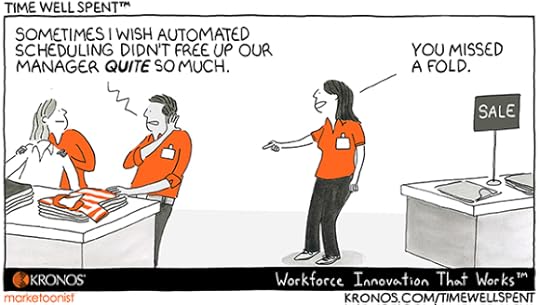
I recently participated in a Twitter chat hosted by the Workforce Institute at Kronos on the topic of predictions. You can check out the chat recap on the Workforce Institute blog. One of the questions that we talked about was automation and machine learning. The idea being that machines can help us automate some aspects of work such as scheduling.
That’s why I couldn’t help but smile at this Time Well Spent cartoon from our friends at Kronos. Because the purpose of introducing machine learning isn’t so managers can spend less time with employees. It’s so they can better quality time on the right conversations. Even if those conversations are to coach employees and their performance. But in all seriousness, if organizations are planning to automate routine functions, there are a couple of things they need to consider.
Agree on the role of technology. There are many reasons to bring automation technology into the workplace. To save money, to free up manager time, etc. If organizations want their implementation to be successful, then everyone needs to be on the same page about why the new technology is being implemented. I’ve seen technology implementations go very wrong because one person on the team thought the new technology would reduce headcount and someone else thought it would free up time. Needless to say, these two people were constantly at odds because they had two different end goals.
Communicate the role of technology. Once key decision makers agree on the reason that the company is implementing automation technology, then make sure that everyone else knows. I’ve seen technology implementations get dragged out way too long because people assumed that the technology was taking their job instead of making their job easier. So, they made sure the implementation took an exceptionally long time to cover their bases. Totally unnecessary when everyone understands the reason that the technology is being implemented.
I think it’s pretty safe to say that technology and automation has become a big part of our personal and professional lives. But everyone reacts to new technology differently. We’re all not early adopters. So, organizations need to be prepared to share the “Why’s?” with employees. Not only will it make the implementation go smoother, but it will have a positive impact on the final outcome.
The post Automation Is Not a Replacement for Interaction – Friday Distraction appeared first on hr bartender.






January 31, 2019
Recruiting In a Tough Labor Market: 4 Advantages to Using Hiring Teams
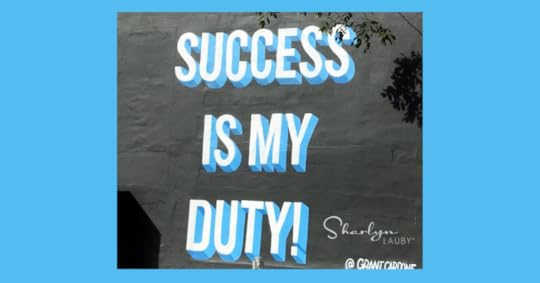
One of the fundamental principles of recruiting is that it’s a two-way decision. The candidate is selecting the company as much as the company is selecting the job seeker. And that selection process is getting more complex every day. Today’s candidates are doing their homework when it comes to the organizations they consider.
Part of that homework includes looking for information and recommendations from friends and colleagues. Which is why it’s no surprise that the most common source of hire remains employee referrals. However, technology is playing a huge role as well. Websites like Glassdoor, Indeed, and other social media platforms are popular places for candidates to research what’s being said about a company. According to Pew Research, almost 80 percent of Americans who have looked for work used online resources in their job search.
If job seekers are using multiple sources to make a decision about the company, then maybe organizations should consider the same thing. Collaborative hiring is the idea that the company would have multiple people involved in the hiring process, in addition to HR and the hiring manager. This “team” would include the other individuals – both inside and outside of their department – that the candidate would interact with most often.
4 Reasons to Consider Using Hiring Teams in Recruiting
Before we talk about the advantages of using collaborative hiring, let’s address the most common roadblock. Time could make organizations reluctant to use collaborative hiring methods.
Collaborative hiring takes time. More people are involved in the process so there are more schedules to coordinate and more interviews. And this could be a legitimate obstacle for companies. It could also be a huge benefit.
It’s hard to admit, but sometimes organizations hire too quickly. And sometimes candidates accept job offers too quickly. While a longer hiring process has its downsides, it can be presented to candidates as a benefit. “We take a long time to hire because this is an important decision. We want to get it right. And we want whoever gets hired to feel the same way.”
In addition to using time to the company’s advantage, here are four other reasons that using a collaborative hiring approach can help you hire the best talent.
The candidate gets a realistic job preview. Let’s face it, sometimes the recruiter and the hiring manager can sugarcoat the job. Or leave something out. It’s not to trick a candidate. Recruiters and hiring manager don’t always do the job they’re hiring for, so their impression of the work can be different. By including other people in the process, the candidate can get the “inside scoop” about the work.Because more people are involved in the process, there’s more buy-into the candidate’s success. Occasionally, the company will hire someone that colleagues will not support. Behind the scenes peers will say, “If we would have interviewed Leonard, we could have told the company he wasn’t a good fit.” Giving co-workers a chance to meet the candidate puts them in a position where they should support the final hiring decision.The candidate has a larger informal network when they start. Every organization has unwritten rules. New hires don’t want to ask their boss or HR about these things. New hires need to have a network of people that they can ask “off the record” questions about policies or company culture. Some organizations are addressing this via a new hire buddy program. Consider including the buddy in the interview process. The company creates a greater opportunity for employee engagement. The last thing a company wants is to hire an employee and have them leave six months later. Having positive, trusting working relationships is the key to employee engagement, productivity, and retention. Collaborative hiring allows candidates to start building relationships with co-workers.
Collaborative hiring also allows candidates to find out additional information about the work and the company that they might not learn otherwise. It’s a win for everyone.
Set Hiring Teams Up for Success
Speaking of wins, collaborative hiring brings several benefits. But organizations need to set recruiting teams up for success. It’s not enough to simply say, “Poof! You’re a hiring team.” Every successful team has three qualities – goals, training, and leadership.
Goal: It might be tempting to think the goal is recruiting. And on some level, that’s correct. But don’t forget the details like the recruiting process, candidate experience, selection criteria, etc.
Training: All teams need training on how to solve problems, collaboration, decision making, conflict resolution, etc. Organizations should invest in the people who are hiring their talent.
Leadership: The group needs to be able to work together and respect each other. They will be making difficult decisions that impact people’s lives.
Treat recruiting teams like department teams and give them the resources they need to be successful. The result will be that they will effectively bring the best talent into the company.
Image captured by Sharlyn Lauby while exploring the streets of Fort Lauderdale, FL
The post Recruiting In a Tough Labor Market: 4 Advantages to Using Hiring Teams appeared first on hr bartender.






Sharlyn J. Lauby's Blog
- Sharlyn J. Lauby's profile
- 10 followers



